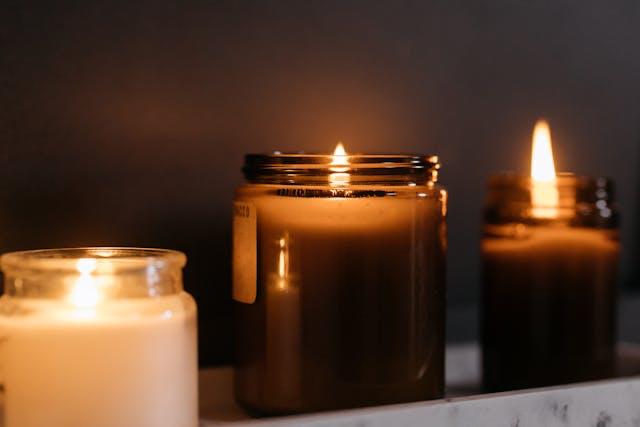

The allure of store-bought candles is undeniable, adding ambiance and warmth to any space with their soft glow and captivating scents. However, behind their beauty lies a potential danger to your family’s health. Manufacturers make many of these candles with ingredients that, when burned, can release harmful substances into the air. It’s essential to be aware of these risks and to seek out safer alternatives to ensure that the comfort and tranquility these candles provide do not come at the expense of your loved ones’ well-being.
When lead-core wicks are burned, they can release lead into the air, which, when inhaled, can pose serious health hazards, especially for children and pets. Lead exposure has been linked to various health issues, including developmental delays, learning difficulties, and behavioral problems. To mitigate this risk, candle manufacturers have largely phased out lead wicks, and many countries have established regulations prohibiting their use. However, it’s still crucial for consumers to remain vigilant and ensure that the candles they purchase explicitly state that they are lead-free.
Artificial scents and dyes used in store-bought candles can harm our health and indoor environment. These synthetic additives are often made from petroleum by-products and can release harmful chemicals when the candle is burned. When these candles are lit, the artificial scents and dyes can emit volatile organic compounds and other toxic chemicals into the air. Prolonged exposure to these substances can lead to respiratory irritation, headaches, dizziness, and even more severe health effects.
Paraffin is a petroleum by-product, and when it is burned, it can release harmful substances into the air, including volatile organic compounds and particulate matter. These emissions can contribute to indoor air pollution and may lead to respiratory irritation, aggravation of existing respiratory conditions, and other health issues. The production and burning of paraffin wax contribute to air pollution and the release of greenhouse gases, which can have negative environmental impacts. In addition, incomplete combustion of paraffin wax can result in the release of soot, which may stain surfaces and contribute to indoor air quality issues.
Benzene and toluene are used to add fragrance and color to candles, but they release volatile organic compounds when the candles are burned. Exposure to benzene has been linked to an increased risk of cancer, particularly leukemia. Inhalation of toluene can cause respiratory issues and dizziness, and in high concentrations, it can affect the nervous system. Therefore, minimizing exposure is a great idea.
Metallic compounds are sometimes used to achieve specific colors in candle dyes. These compounds may contain heavy metals such as lead, cadmium, and chromium. Additionally, candle fragrances may contain heavy metals as impurities or as intentional additives to enhance the scent. When burned, these heavy metals can be released into the air and inhaled, posing health risks to individuals. Ensure you know what is in the candles before lighting them, especially around young children.
Making candles at home offers numerous health and environmental advantages compared to using store-bought candles. By crafting candles, you control the ingredients, ensuring they are free from potentially harmful substances like lead, artificial scents, and dyes derived from petroleum by-products. This helps minimize indoor air pollution and reduces the risk of respiratory irritation and other health issues associated with burning commercial candles. Additionally, using natural ingredients, like soy wax and essential oils, not only promotes a healthier indoor environment but also minimizes the release of harmful substances into the air, contributing to better air quality and overall well-being. By choosing sustainable materials and environmentally friendly production methods, homemade candles can be an eco-conscious alternative to store-bought options.
Making candles in candle jars can be a great way to skip potential health risks associated with commercial candles. By creating candles, you have complete control over the ingredients, ensuring you can minimize exposure to heavy metals and other potentially harmful substances. You can use high-quality, natural ingredients and choose fragrance-free or naturally scented options to create a healthier and safer candle. Additionally, candles can be a fun and rewarding experience, allowing you to customize the candles to your specific preferences while providing peace of mind about the materials used. This DIY approach can contribute to a healthier and more enjoyable candle-burning experience.
There’s nothing worse than lighting a new candle and watching it sputter out, tunnel, or…
Discover how woven metal fabric transforms restaurant design with its versatility, from feature walls to…
Upgrading your workspace? Get inspired by design ideas for materials, lighting, and amenities, and tips…
In recent years, the global interest in peptides has surged due to their wide-ranging benefits…
Maximize your workspace without overspending. Explore practical ways to expand your office using smart layouts,…
Discover how to create a thriving STEM community through hands-on, collaborative projects that are perfect…